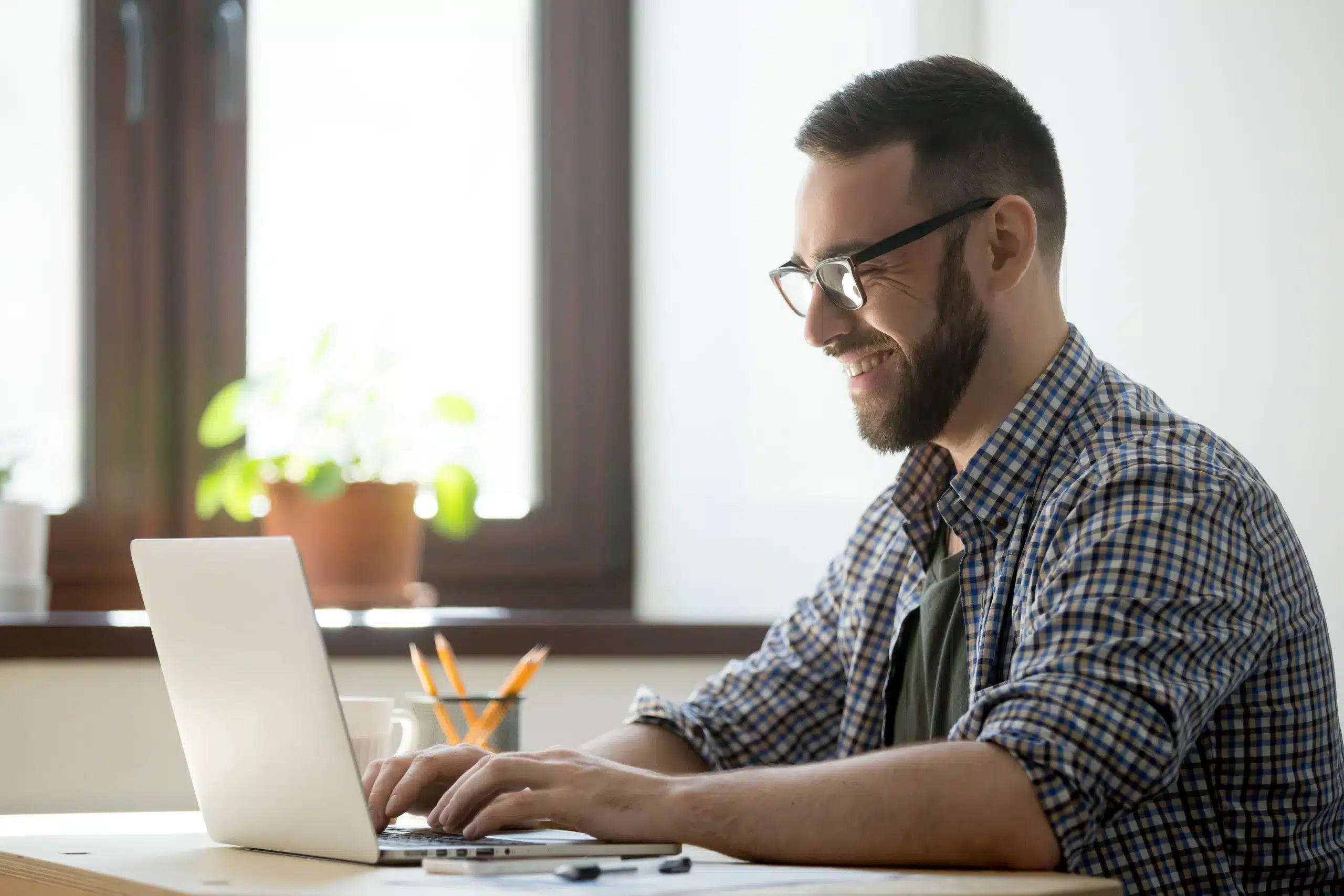A necessity for companies across the globe, there are thousands of managers who face the challenge of managing remote teams for the first time today.
It can be an overwhelming experience for the first time remote managers to manage and adapt to lifestyle changes too, along with changes at work.
Especially with regards to work, your equations with your team is bound to change as they now work remotely.
You have the responsibility of managing them efficiently, without seeing them.
That sounds a bit strange right, but it is true!
Your success in managing your new remote team will decide what would be the future of your company, whether it would be remote-first or remote-friendly or go back to being a regular in-office setup.
We have pulled together simple 11 tips to streamline your work process and develop an efficient workflow that will help you power up you and your team’s productivity as you step up in this new role of remote management.
11 tips for first time remote managers
1 Embrace the change
A study in 2019 observed that 99 percent of employees almost unanimously wanted to continue to work remotely (or at least for some of the time) for the rest of their careers.
This means that as a leader who now must manage a team whether big or small, from a remote location, it is crucial that you showcase a positive attitude towards the situation so that your team can follow the same.
More so, since a lot of team members might already be excited about the change and who can further help in boosting the team’s morale.
Highlighting the benefits of remote working, having an open communication strategy with the team, creating transparent processes that streamline work, etc. can help your team to embrace this change that is here to stay.
It is also advisable to make use of the right technology to familiarize yourself with remote work requirements and remote working etiquettes and set an example for the team.
OKR Software – Rated 4.8 on G2
Empower your managers to be a better leader with essential performance tools & personalized coaching support.
Effective One on One Meetings
We built a software that automatically schedules, lets you set agenda, take notes, exchange feedback and track actions – all in one place.
ICEBREAKER QUESTIONS EBOOK
Icebreaker questions you can ask in every meeting during the COVID-19 pandemic.
2 Be empathetic

Being an empathetic manager was always important, whether your work took place remotely or in an office.
Given today’s uncertain economic environment, empathy is more important than ever since a lot of team members are juggling work and family commitments.
An important thing to consider here is that tools and technology often mask the intention and humanity of the people involved.
Since you will now be communicating digitally more than ever, it will be difficult to know what the other person is doing at that moment or what their intentions are.
This can often lead to misunderstandings and discrepancies that can abrupt the momentum and cause unnecessary friction.
A few ways to improve coordination between team members and creating your image as a sensitive and dependable leader are:
- Observe, listen and ask questions rather than giving orders.
- Open up about changes taking place within the company.
- Consider the other person’s perspectives before concluding.
- Help people adjust to a new professional experience by sharing tips on how you work.
- Keep important information accessible for everyone through tools like cloud storage, Google Drive, etc.
- Embrace communication across distributed time zone work schedules.
- Plan ahead so that no decision is made at the last minute and team members feel included.
- Get to know your team member’s personal commitments to understand where they are coming from.
- Practice mindfulness and encourage your team to do the same to let them know it’s alright to take some time for themselves.
While there is no one “right way” to demonstrate your compassionate side, always remember that empathy is not about what you want, but what the other person wants and needs.
Therefore, any action you take or suggest must benefit them.
3 Trust your team & build rapport
A lot of employees often feel that they constantly need to be “visible” to “prove” that they are working.
This grows exponentially with remote working.
The pressure of answering every call, not letting a notification go unanswered for more than a few minutes, being present for every discussion, etc., often creates unwanted anxiety.
Since you cannot see them “working”, instead of completing important tasks, your team members might be worried about how their contributions are perceived.
Therefore, trust plays a crucial role, more so for first time remote managers.

Demonstrating that you care is important for your team and essential for you to understand their motivations and make them more comfortable about working with you.
After all, it is also the first time when they are seeing you in a new role as a remote manager.
Here are a few tips that can help you trust your team members better and for them to trust you as their leader:
- Build rapport with every member of your team as it is what will help you work through problems that each team member has, help them come to you with things important to them, and give you the benefit of the doubt when you make a mistake or an unpopular decision.
- Assess your team members’ skill sets, personality traits, and communication styles to help anticipate how they will perform and trust them to meet deadlines and deliver.
- Since we tend to trust those members we perceive to be like us, be a team player, and lead by example.
- Be predictable and consistent while applying workflows and protocols.
- Say what you mean and do what you say.
- Demonstrate confidence in all team members by praising and rewarding achievements of individual members with a focus on how these milestones play a critical role in group success.
- Share demonstrable progress from members and give under-performing members individual coaching to help them get back on track.
- Gain commitment to accomplishing the goals set by helping them understand the overarching strategy and how their individual tasks map into it.
- Share information around work schedules, project progress, and task status openly with the team.
- Select the correct tools and applications to support the team for effective remote working.
- Take time to socialize virtually by encouraging team members to share more personal updates, from how they spent the weekend to the last time they went for a stroll.
For team members, knowing whom to turn to for help enhances productivity and aids development.
And this is equally important to determine your success.
4 Set clear communication processes
A remote team functions on clear communication.
And every remote team’s communication requires thoughtful consideration and some adaptations
for the virtual office.
As your team goes digital and turn to remote work, setting some ground rules for team communication can go a long way in making sure your team is productive and happy.
1 Set clear work processes
When everyone works in the same office, we often overlook the discrepancies in the processes since they are often resolved then and there.
This changes once the team works remotely.
The first step towards improving workflow is to list every process and then do a thorough analysis to figure out how you have been operating so far and what you have been doing wrong.
Talking to your team and asking them for their feedback on each process or workflow that your business follows can be a great asset here to redefine a new set of processes.

2 Set clear expectations
Telling your team what is expected out of them upfront and how they will be evaluated so that nothing is unclear, is another way to ensure that communication stays smooth between the team members.
Similarly, communicate with your team to understand what is it that they expect from you so that you can be realistic while setting a process or goal.
Setting expectations must also include deciding on available hours, taking proper lunch breaks, and to physically turn off and exit workspace, and communicating all of this to other team members.
3 Avoid miscommunication
Once you have analyzed your current work process, it is time to keep your eyes open for any waning motivation, unclear instruction, or communication breakdown while looking for opportunities to improve.
Identifying factors that are affecting the effectiveness of your existing process or workflow can help you fill in the gaps and create a better version of your work process.
An easy and reliable way to avoid miscommunication and confusion is by asking the team members if they have understood the message.
You can also integrate a common team calendar that shows vacation and holidays, important launches and due dates, and shared meetings so you can visually see everyone’s availability.
OKR Software – Rated 4.8 on G2
Empower your managers to be a better leader with essential performance tools & personalized coaching support.
Effective One on One Meetings
We built a software that automatically schedules, lets you set agenda, take notes, exchange feedback and track actions – all in one place.
ICEBREAKER QUESTIONS EBOOK
Icebreaker questions you can ask in every meeting during the COVID-19 pandemic.
5 Use the right mix of technology
Using the right set of tools especially to communicate and store files that must be accessible to everyone can make or break processes.
An important question to ask yourself before using a tool to convey a piece of information is – is the information time-sensitive or does it need more consideration while delivering?
For example, if you have a project update that is not time-sensitive, engaging people in chat may be distracting.
Similarly, if you have constructive feedback to give, doing it over a video call so that your intentions come across makes more sense.
Digital communication gone rogue can breed misunderstandings and hurt feelings which is why tools matter more in remote work because they are the foundation for communication.
Here is a quick roundup of the most important types of tools you must consider for remote work:
- Team communication apps: Slack, Troop Messenger
- Video conferencing app: Zoom
- One on one meetings: Peoplebox
- Design collaboration app: InVision
- Software development tool: GitHub
- Project management software: Trello, ProofHub, Basecamp, Instagantt
- Password manager: Dashlane
- File management apps: Google Drive, Dropbox
- Workflow automation for business: Zapier
- Time converter for distributed teams: World Time Buddy
6 Have longer one on one meetings
Remote working cuts down the time for face-to-face communication and makes it difficult to sense the intent in messages between you and your team.
Since first time remote managers now do not have the same moments they got earlier in the office to build rapport and talk about issues ad hoc, it is imperative that you make up for it by setting aside more time for your one on one meetings with your remote employees.
A few benefits of one on one meetings are:
Effective One on One Meetings
The best way to manage one on one meetings is by giving remote team members a full hour every week on your calendar to ensure you cover a variety of topics and really dive into issues
You can always identify a few icebreaker questions to initiate a conversation with your team members and keep the conversations flowing.
A few things that can help you have effective and fruitful one on one meetings are:
- Building an agenda to give the other a heads up so that you can both come to the meeting prepared.
- Carrying forward an ongoing discussion.
- Keeping a record of finished work and past discussions to track your progress as a manager and theirs as a team member.
- Recognizing the achievements of a team member or giving feedback during one on one meetings.
You will know your one on one meetings are thriving when your team adds to the discussions throughout the week and takes initiative to track and follow-through on growth goals and ongoing items.
7 Focus on results, not hours
If existing team members are shifting to remote, trial projects, and identifying trust signals, the next step is to make sure you invest in establishing a culture of ownership and accountability.
The best place to start here is always with you since you are the example that your team will look to emulate.
More meticulously you work while focusing on the results and not the hours put in will establish a culture of ownership and accountability that will encourage others to follow.
Since it is not possible for everyone to have the same personal schedule at home, this is a great way to give out the message that you are only focused on the outcome and not the time of the day the work was carried out, if it meets the deadline.
As there are chances that your team is distributed across different locations, instead of focusing on the hours worked, focusing on the outcomes will also help you measure your team’s success accordingly.
It is also a reason to reconsider what productivity really means – punching eight hours or getting results that matter.
An important aspect to consider here is setting clear expectations and communicating the s
ame so that your team members understand what work they are responsible for (goals), when it needs to be done (deadlines), and how they are expected to work (with regular status updates).
8 Provide autonomy, do not micromanage
A Gallup workplace research shows that to get the most out of a remote worker it is ideal to emphasize on “individualization”.
Since you cannot keep an eye on everything since no one is physically around, letting team members take their own decision while regularly checking in based on a process will enable you to keep a pulse on them, yet provide them with an opportunity to be their own boss.
Herein, you must find a balance by identifying what tasks you can individualize and which ones are necessary to keep standard.
Asking team members about their preferences when possible will also help you show them that you care and are focused on improving their day-to-day work experience.

A few ways to provide autonomy and avoid micromanagement are:
- Implement a project management system where all requests come in, then get prioritized and assigned, and then tracked to completion, to streamline things significantly.
- Empower your team to pace themselves and be transparent about their commitments so they can help each other avoid confusion.
- Delegate tasks and then physically leave until it is time to check on the result.
- Get involved in things that only you can do.
- Combat micromanaging by seeking your team members’ input to know how would they like to be managed.
- Trust your team and seek to empower them to succeed.
- Adopt a fail-forward attitude to let your team learn through failure and openly discuss the lessons learned.
- Encourage a strong line of open communication to let your team know they can come to you with problems or questions.
- Give them more responsibility than you are comfortable with after discussing the project, strategies, and concerns upfront and being available to answer any questions.

9 Do not hold back your feedback
Giving timely feedback in a constructive way can have a positive and long lasting impact on the team.
One thing you must consider here is that providing feedback is not solely the team leader’s responsibility, especially if the work affects group dynamics.
As a manager, it is your job to ensure that all team members involved are providing regular and constructive feedback to each other and you.
For example, if someone does not follow through on the expectations the team created, the person must get feedback from the group about what happened instead of only you.
This can be done by creating opportunities for regular check-ins.
This will also help you develop your team’s capacity to give feedback and help them get used to articulating how they feel about the team’s progress in a constructive manner.
The aim here is to help “people understand how their behavior is impacting others” by asking each person to prepare specific reviews of colleagues where they say one thing they appreciate about the other members and one thing that would be helpful if the teammate did differently.
Keeping performance issues out in the open by raising them in a meeting also helps the team improve as a whole and harnesses the power of the group to prompt change.
When done keeping in mind the sensitivity of the issue this can help foster team relationships.
You can also debrief every project to discuss what worked and what did not to help understand what should be done differently next time.
This must be practiced in daily stand-ups, weekly one on one meetings, and monthly assessment meetings to ensure the project and the team never suffers.
10 Appreciate the team
For the first time remote managers, as much as giving feedback plays a crucial role, the recognition of team members is equally important.
One on one meetings is an ideal way to do this since it also enables the team member to look at your expressions and get the emotion you are trying to put across.
This not only helps build confidence in team members working remotely, but it also gives first time remote managers a chance to break the ice and celebrate achievements.
Since all your team members are at other locations, a few other interesting ways to appreciate a team member’s efforts are:
- Surprise deliveries: It can be as simple as a pizza or an edible bouquet.
- Health benefits: Rewarding the team member with a gym membership or exercise equipment, or reduce their hours occasionally to allow mental health breaks and physical recuperation.
- Handwritten notes: Although old school, a personalized message is the perfect way to boost morale.
11 Create ‘watercooler’ moments

It is easy for you and your team to feel distant without a lunchroom or a coffee machine to spark conversations and connections that are personal.
It is therefore crucial for your team’s and your well being that you facilitate these conversations by setting up virtual happy hours, home tours, or virtual trivia.
The idea is to create a space where employees do not feel compelled to talk about work, but instead talk about topics that bond them, however, virtually.
Getting your team comfortable with virtual socializing is also important to help them be successful.
Once team members start interacting with each other easily on social calls, you can also suggest ideas for games or activities and create social events around them.
OKR Software – Rated 4.8 on G2
Empower your managers to be a better leader with essential performance tools & personalized coaching support.
Effective One on One Meetings
We built a software that automatically schedules, lets you set agenda, take notes, exchange feedback and track actions – all in one place.
ICEBREAKER QUESTIONS EBOOK
Icebreaker questions you can ask in every meeting during the COVID-19 pandemic.
Summing Up
It is quite easy to fall into the trap of thinking that remote team members are only to help you get things done.
Whereas they, just like the people in your office, have goals and aspirations that can not only help them grow personally but help the company succeed.
Focusing on their career growth is the need of the hour, more so, since there is a probability that remote working will stay for longer than we anticipate.
Along with, first time remote managers must also be open to face unique challenges every day and address them to effectively manage the entire team.
Implementing these tips is an investment in not only your team but in you as a manager who understands the needs and challenges of managing remote employees and is bet
ter prepared to adapt to the norm.








